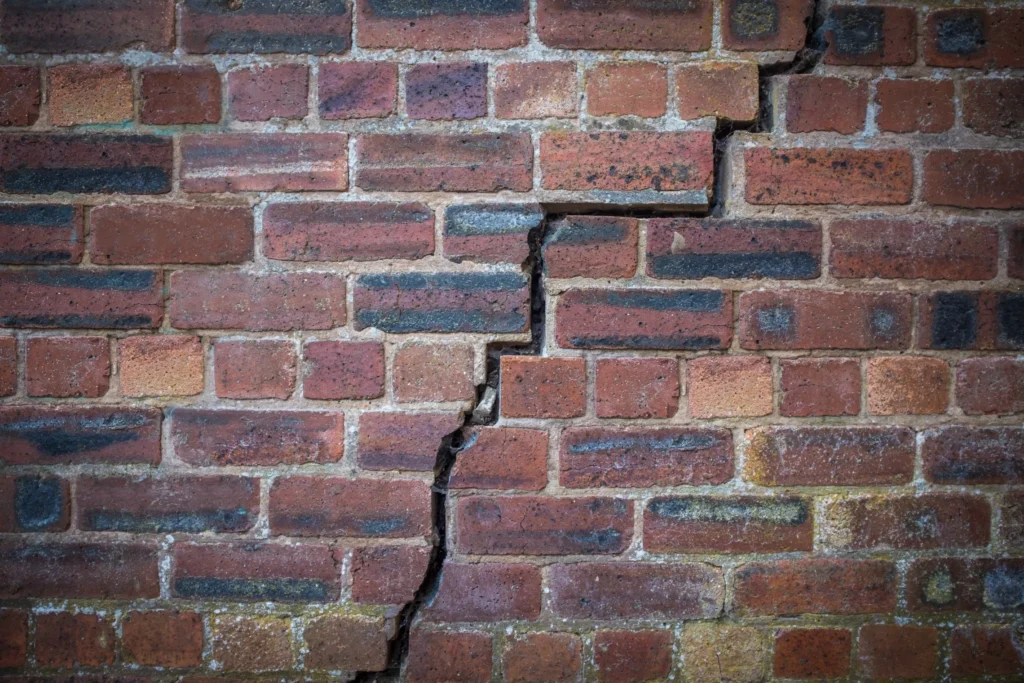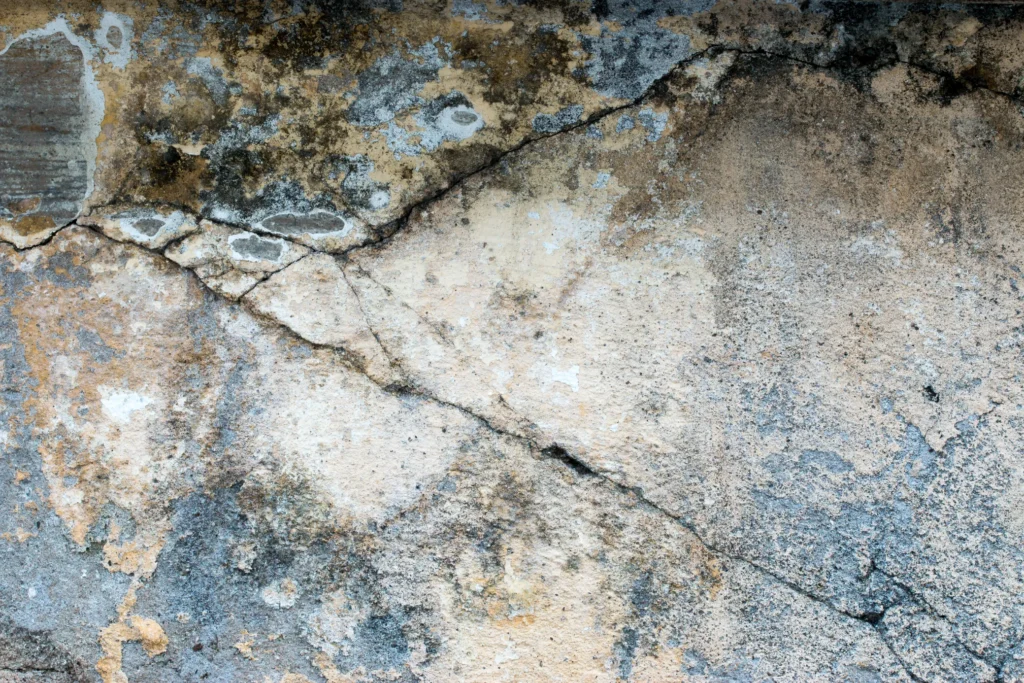Can Water Damage Concrete Foundation?
Can water damage concrete foundation? Absolutely, and understanding the risks can help prevent costly repairs. Although concrete is known for its strength, it’s naturally porous. Over time, moisture can seep into tiny voids, weakening the material and creating the perfect environment for cracks and other structural problems. By asking yourself, “Can water damage concrete foundation?” you’re already on the right track to safeguarding your property.
Addressing water issues early is important because prolonged exposure to moisture can undermine the stability of your home. In this blog, we’ll discuss what causes water damage, the signs to watch for, preventive measures you can take, and the best repair options available.
Protect Your Home from Water Damage Today. Contact Us for a Free Inspection!
How Can Water Damage Concrete Foundation?
So, how can water damage concrete foundation in the long term? Here’s the thing; it can compromise the load-bearing capacity of your home, lead to interior water damage, and set the stage for costly repairs if left to worsen. Water infiltrates concrete through cracks, gaps around pipes, and even the natural pores in the material. By addressing these infiltration points and maintaining effective drainage, you can protect your foundation against the relentless force of water.
Once inside, water infiltration can lead to a host of issues:
- Structural Weakening: Repeated water exposure erodes the bonds within concrete, making it prone to fractures.
- Cracks and Gaps: As moisture expands and contracts with changing temperatures, it can create or worsen cracks.
- Mold and Mildew Growth: Persistent dampness invites mold, which poses health risks and further degrades the foundation.
Freeze-thaw cycles compound these problems by causing the trapped water to expand inside the concrete, accelerating deterioration. Poor drainage also plays a significant role—if water isn’t channeled away from your property, it’s more likely to pool around the foundation and seep in.

Why It's Important to Address Water Damage Early
When foundation problems arise, acting promptly to address water damage is crucial for protecting your home’s structural integrity. Ignoring small issues like cracks or leaks can allow them to worsen, eventually compromising your foundation and leading to expensive repairs. Beyond the physical damage, prolonged moisture exposure can contribute to health risks by promoting mold growth, further emphasizing the need for quick and effective intervention.

Signs of Water Damage in Concrete Foundations
Recognizing the signs of water damage in concrete foundations can save you thousands in repairs. Even the smallest indicators can signal an underlying issue that may worsen over time. Concrete naturally absorbs moisture, and when water infiltrates, it weakens the structure. This not only jeopardizes the foundation’s stability but also creates a domino effect of related problems inside your home.
Below are some of the most common signs to watch for:
- Visible Cracks: Foundation cracks might seem harmless at first, but they often expand when water seeps in, compromising structural integrity.
- Efflorescence (White Powdery Residue): This chalky substance appears when minerals are carried to the surface by water, indicating persistent moisture within the concrete.
- Warping or Shifting of Walls and Floors: Unexplained movement in walls or floors can occur when the foundation loses its stable footing due to water damage.
- Musty Odors or Mold: Consistent dampness fosters mold growth, producing unpleasant smells and potential health concerns.
Staying alert to these clues is essential for preventing further deterioration. Small cracks and musty odors can rapidly progress into serious hazards, so a timely inspection is often the best safeguard.
Don’t Wait for Small Cracks to Grow! Schedule a Professional Inspection Today.
Causes of Water Damage to Concrete Foundations
The causes of water damage to concrete foundations are often preventable with proactive measures. Concrete may appear robust, but it remains vulnerable to a variety of moisture-related threats. Identifying and addressing these factors early on helps preserve the foundation’s strength while avoiding high repair costs.
Here are some of the most common culprits:
- Poor Drainage Systems: When gutters, downspouts, and landscaping fail to direct water away, it accumulates around the foundation, soaking into the concrete over time.
- High Water Tables or Flood-Prone Areas: Properties located in regions with naturally high groundwater levels or frequent flooding are more likely to experience ongoing moisture issues.
- Improper Grading Around the Foundation: If the surrounding soil slopes inward instead of away, rainwater can pool near the foundation walls, leading to saturation.
- Plumbing Leaks and Hydrostatic Pressure: Even minor pipe leaks can escalate, and the build-up of water pressure beneath the foundation can force water into cracks.
- Severe Weather Conditions: Storms with heavy rainfall or extended wet seasons increase the risk of excessive ground moisture that seeps into vulnerable areas.
By correcting these issues—whether it’s improving drainage or repairing leaks—you can significantly reduce the likelihood of foundation damage. Proactive solutions not only protect the structure from moisture but also maintain the overall health and stability of your property for years to come.
How to Prevent Water Damage in Concrete Foundations
To prevent water damage in concrete foundations, homeowners should take proactive steps that address both immediate threats and long-term protection. Concrete may be strong, but it isn’t invincible—consistent exposure to moisture weakens the material and undermines your home’s structural integrity. By focusing on a few essential measures, you can drastically reduce the likelihood of water-related issues.
Below are key strategies to consider:
- Install Proper Drainage Systems: A functional drainage setup, including effective downspouts and extensions, keeps water from pooling around the foundation. This step is vital in areas with heavy rainfall or naturally high water tables.
- Seal Cracks and Waterproof the Foundation: Hairline cracks can serve as entry points for water. Using high-quality sealants and waterproof coatings will create a protective barrier and minimize moisture intrusion.
- Grade the Landscape to Divert Water Away: Ensure that the soil around your home slopes outward. Poor grading channels runoff toward the foundation, increasing the risk of saturation.
- Maintain Gutters and Downspouts: Regularly clean and inspect these components. Clogs or leaks can force water to spill over, saturating the ground next to your foundation.
- Use Sump Pumps in Flood-Prone Areas: A sump pump is an excellent defense in regions prone to heavy storms or high groundwater. It actively removes excess water, preventing buildup around the foundation.
By consistently applying these preventive measures, you reinforce your foundation’s resilience against moisture. A well-drained property combined with routine inspections reduces costly repairs and helps preserve both the structural stability and overall value of your home.
Common Concrete Water Damage Repair Method
Repairing foundations with water damage can involve several steps depending on the severity of the damage. Because concrete acts like a sponge when exposed to consistent moisture, identifying and addressing the source of the problem is just as crucial as patching visible cracks. Ignoring early warning signs may result in more extensive structural issues, which ultimately leads to higher repair costs.
Start by assessing the extent of the damage through a professional inspection. This evaluation helps determine whether you’re dealing with superficial cracks or deep-set problems affecting the foundation’s core stability. Next, follow these steps to restore and reinforce your concrete:
Epoxy Injections Crack Repair
Injecting epoxy or polyurethane resins into cracks fills the voids and seals out water, preventing further intrusion.
Learn more.
Address Water Infiltration Sources
Fix plumbing leaks, improve grading, or upgrade drainage systems to eliminate the root cause of moisture buildup.
Learn more.
Concrete Waterproofing
Applying coatings or membranes to the foundation walls adds a protective barrier against future water penetration.
Learn more.
House Lifting Above Flood Level
For foundations severely affected by water damage, house lifting elevates the structure, protecting it from further water exposure and ensuring long-term stability.
Short paragraphs or isolated repairs may not be enough if the underlying cause remains unresolved. A comprehensive approach—including inspection, repair, and preventive measures—ensures your foundation retains its load-bearing capacity and safeguards the overall stability of your home.
Final Thoughts on Can Water Damage Concrete Foundation
To recap, the answer to your question, “Can water damage concrete foundation? Yes, but with the right steps, you can protect your property. Each section above highlights how simple maintenance routines, early detection, and targeted repairs help you avoid the worst consequences of moisture infiltration. From installing effective drainage systems to performing timely inspections, proactive measures go a long way in keeping your foundation secure.
Ultimately, if you’ve ever wondered, “Can water damage concrete foundation?” the answer is a resounding yes. However, focusing on prevention and acting swiftly when problems arise ensures your home remains structurally sound for years to come.
Stop Water Damage in Its Tracks. Contact Us for Expert Foundation Support Today!